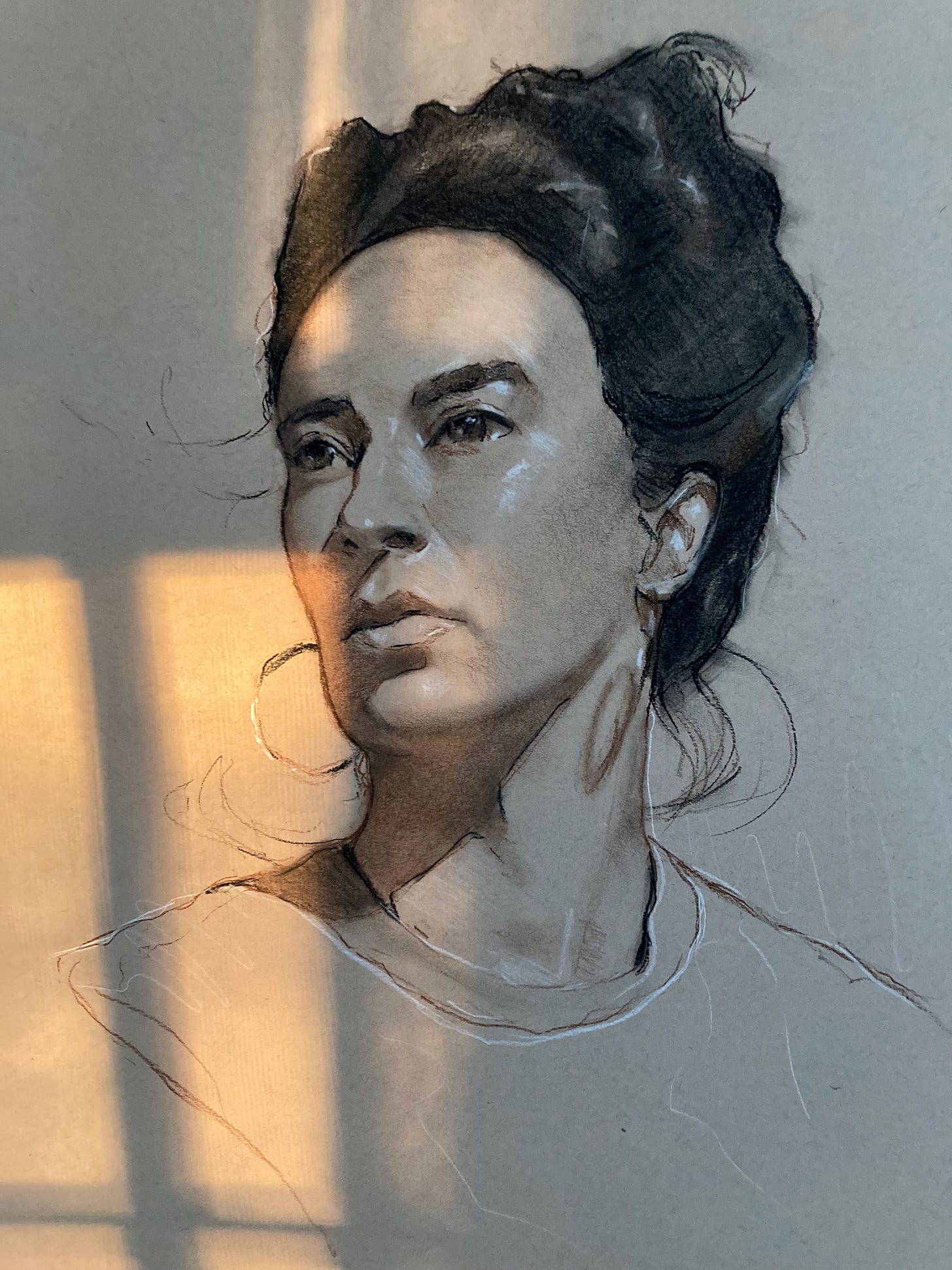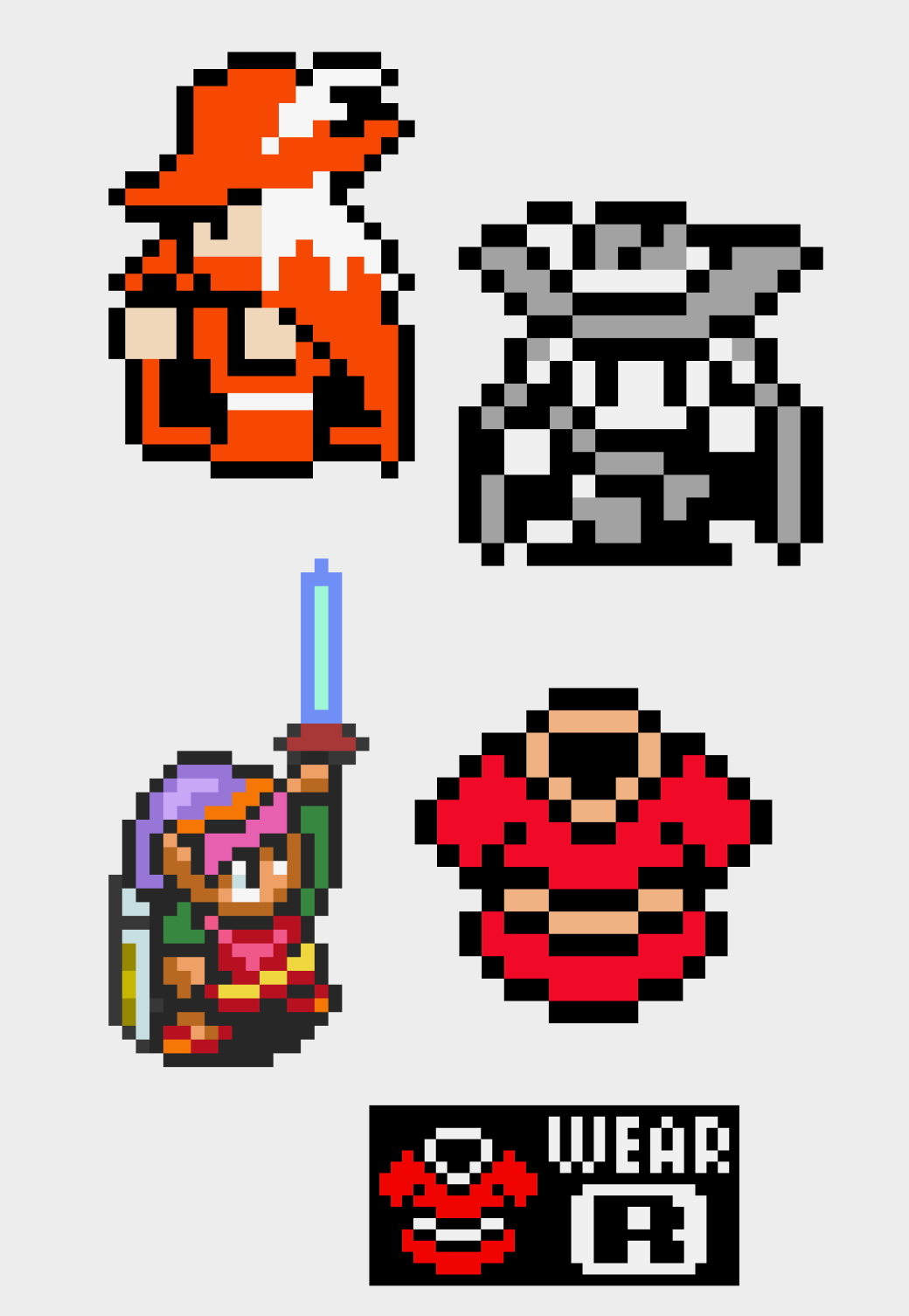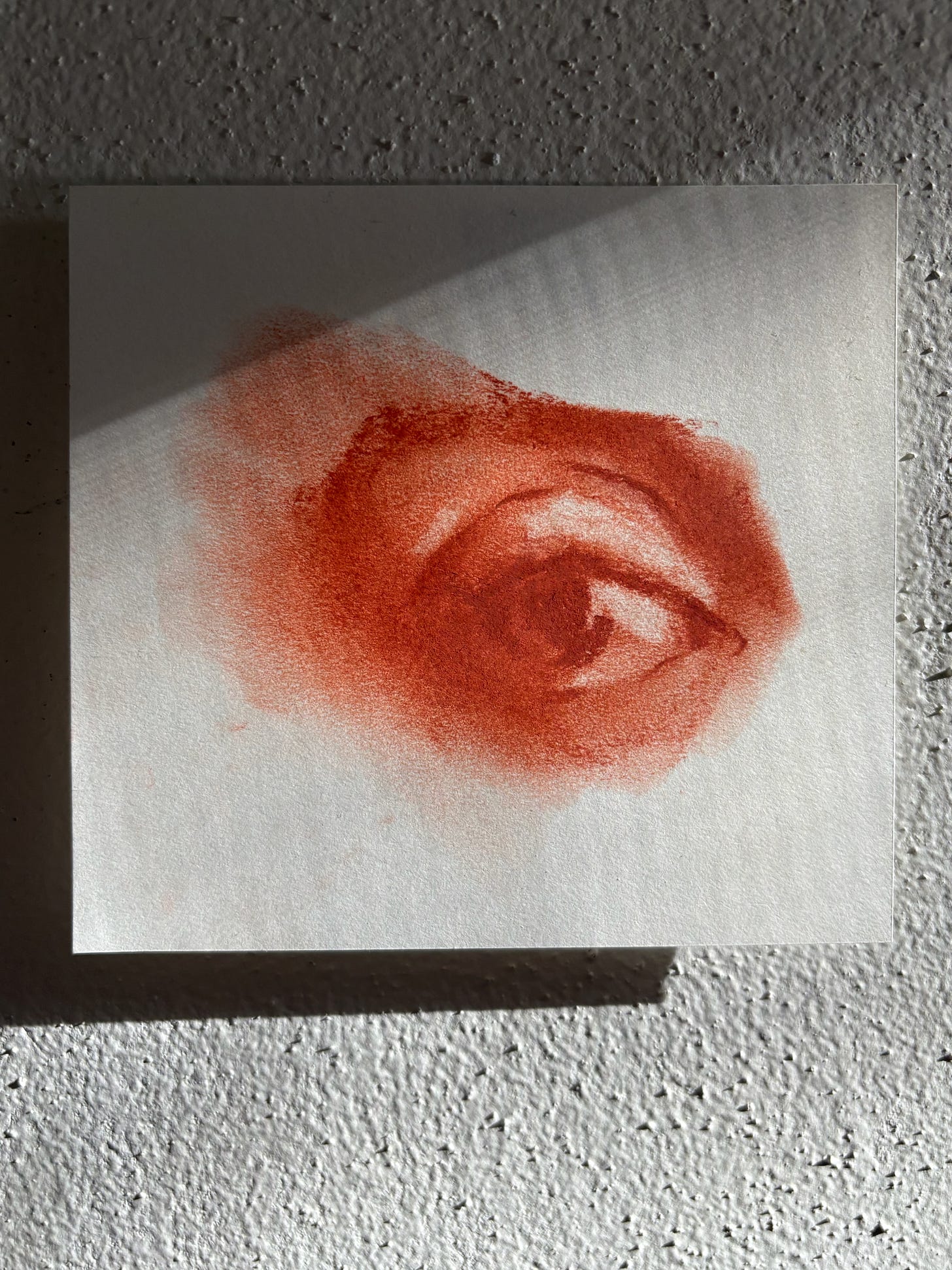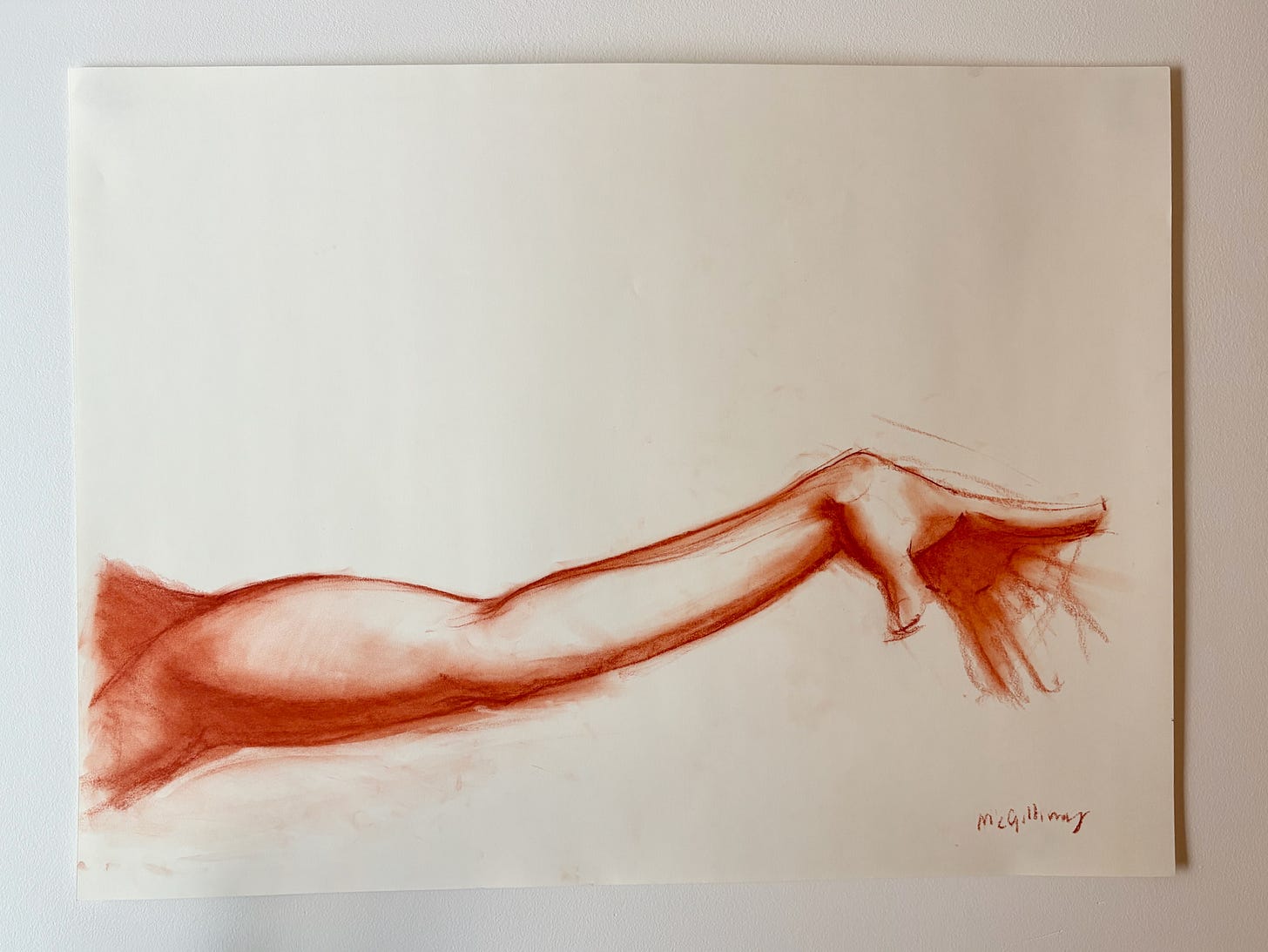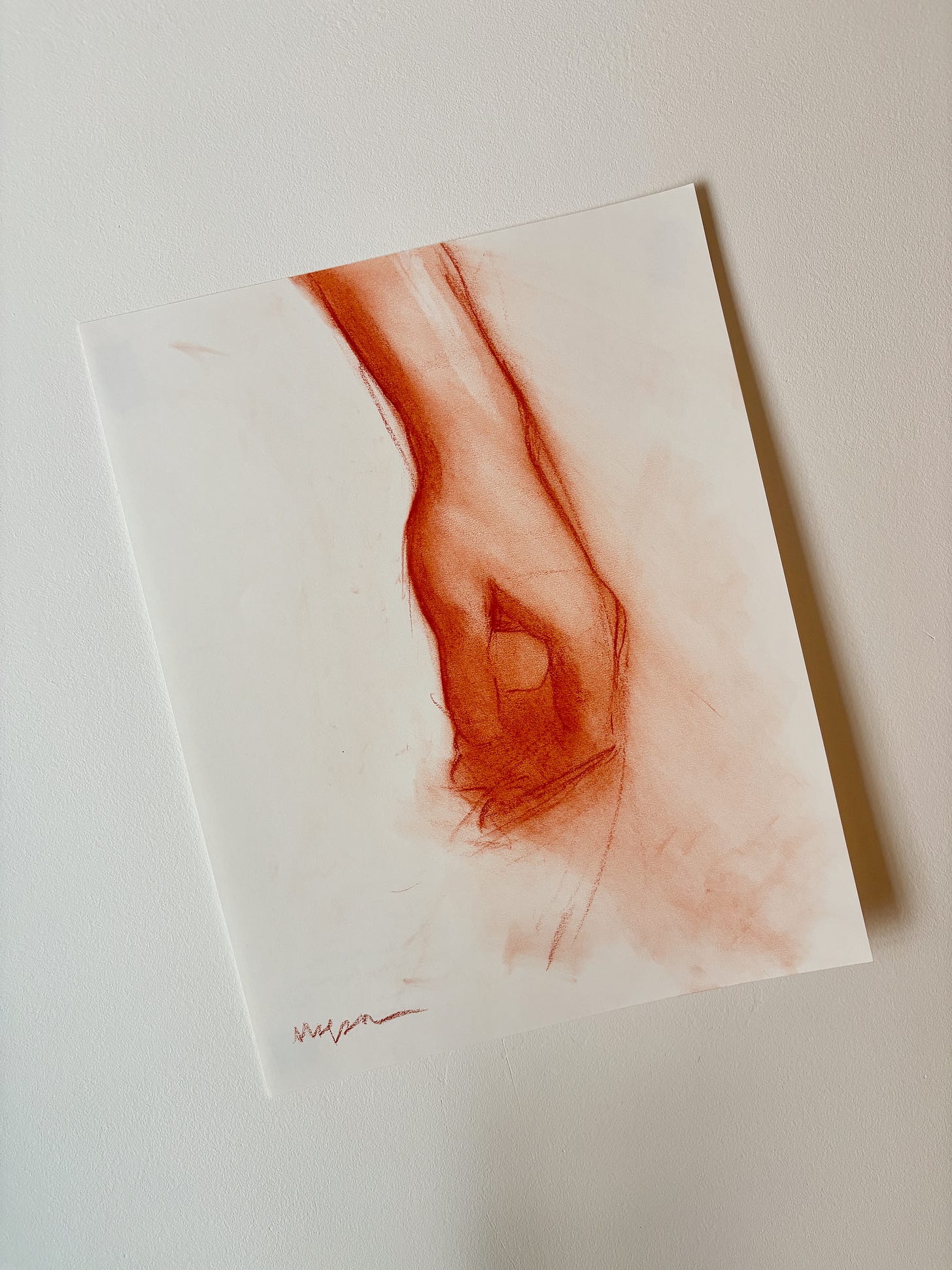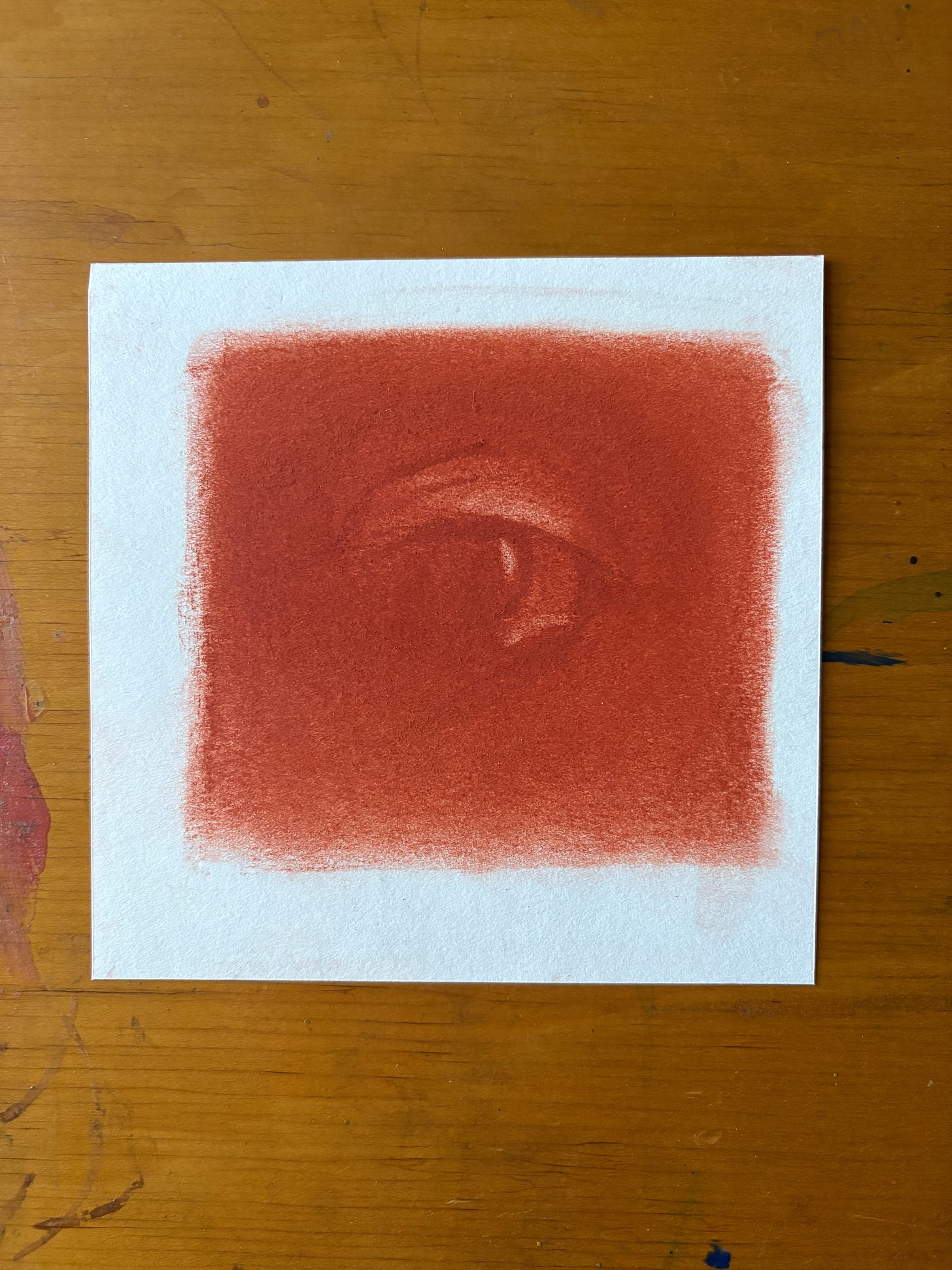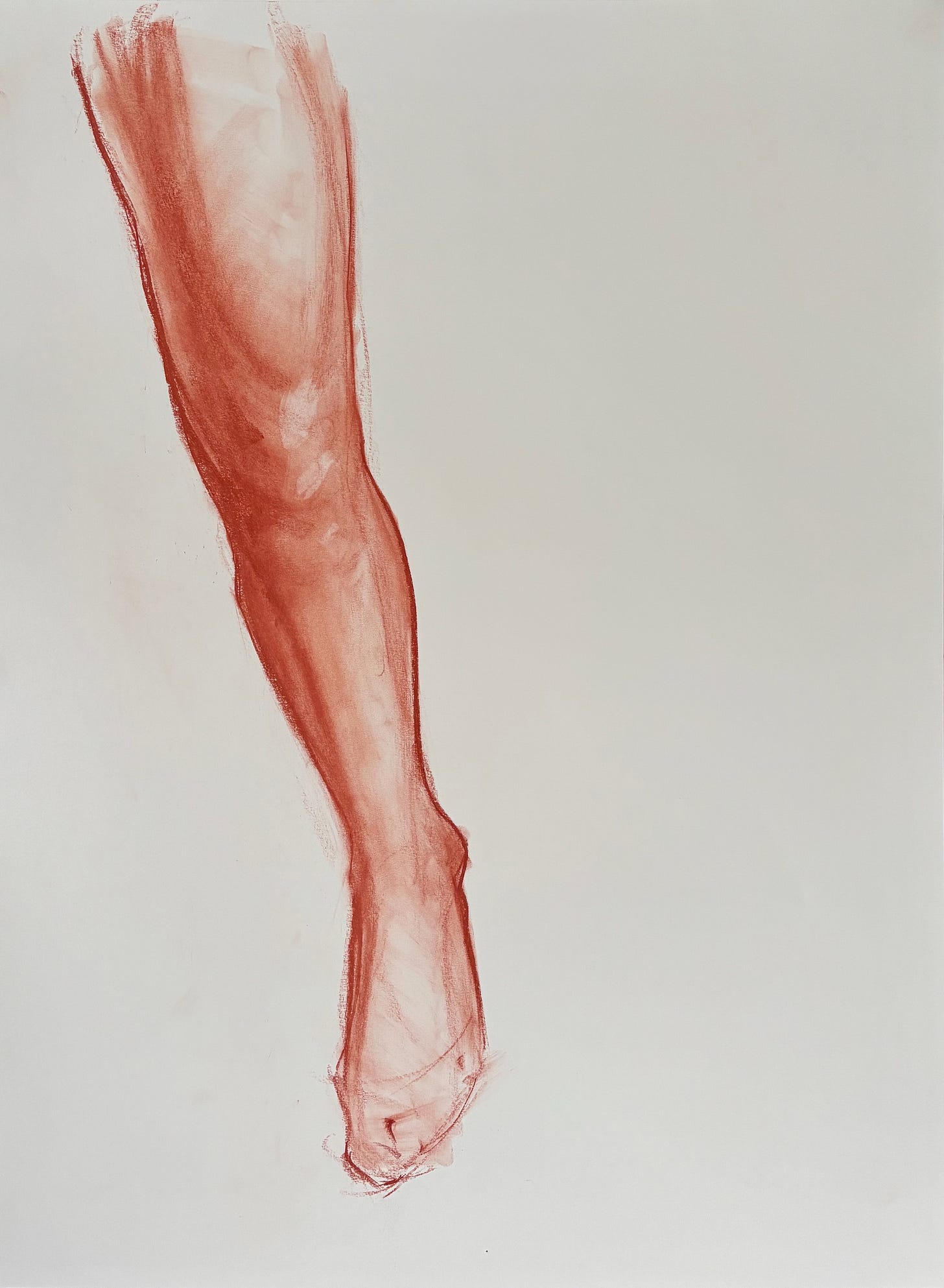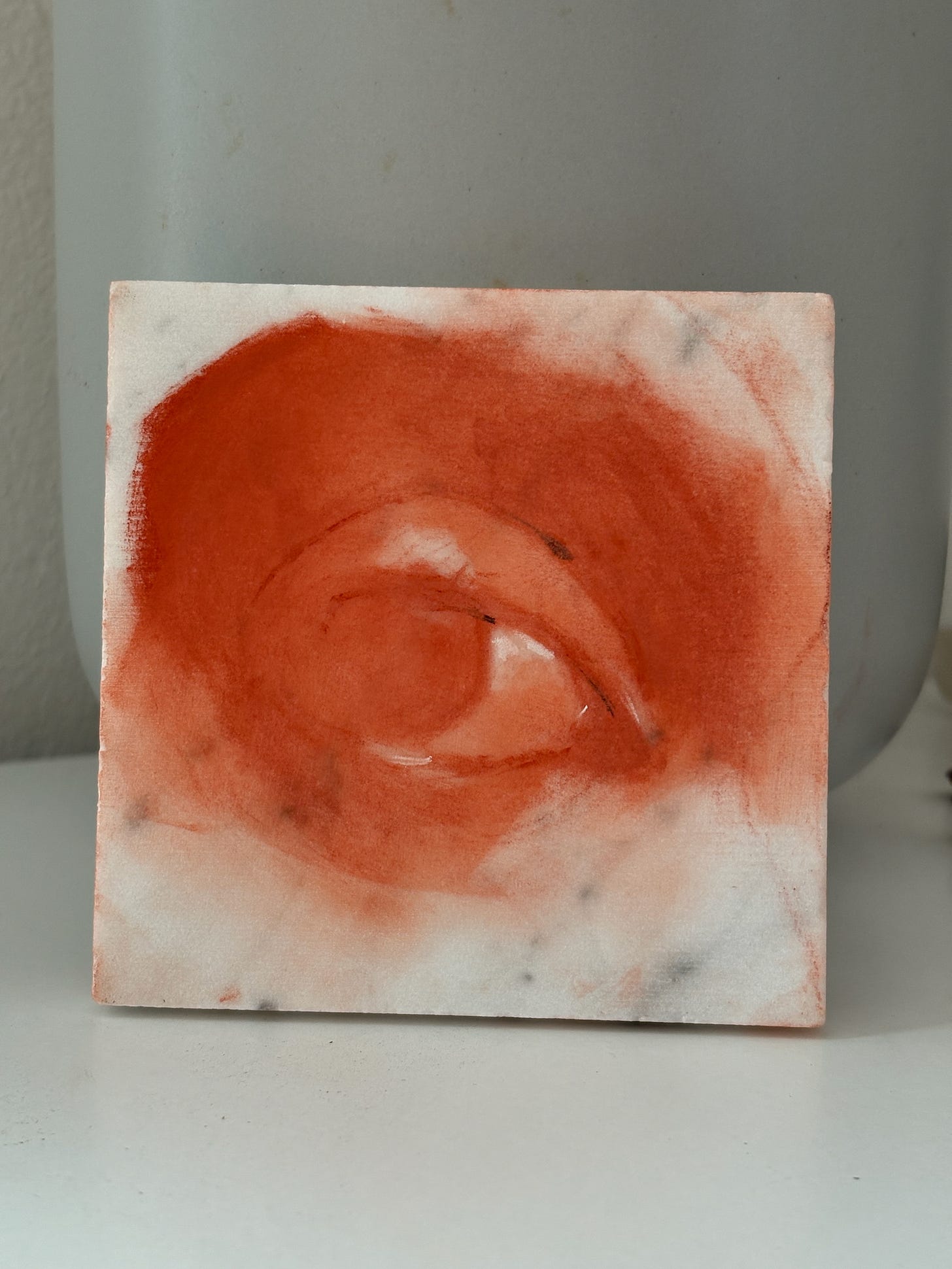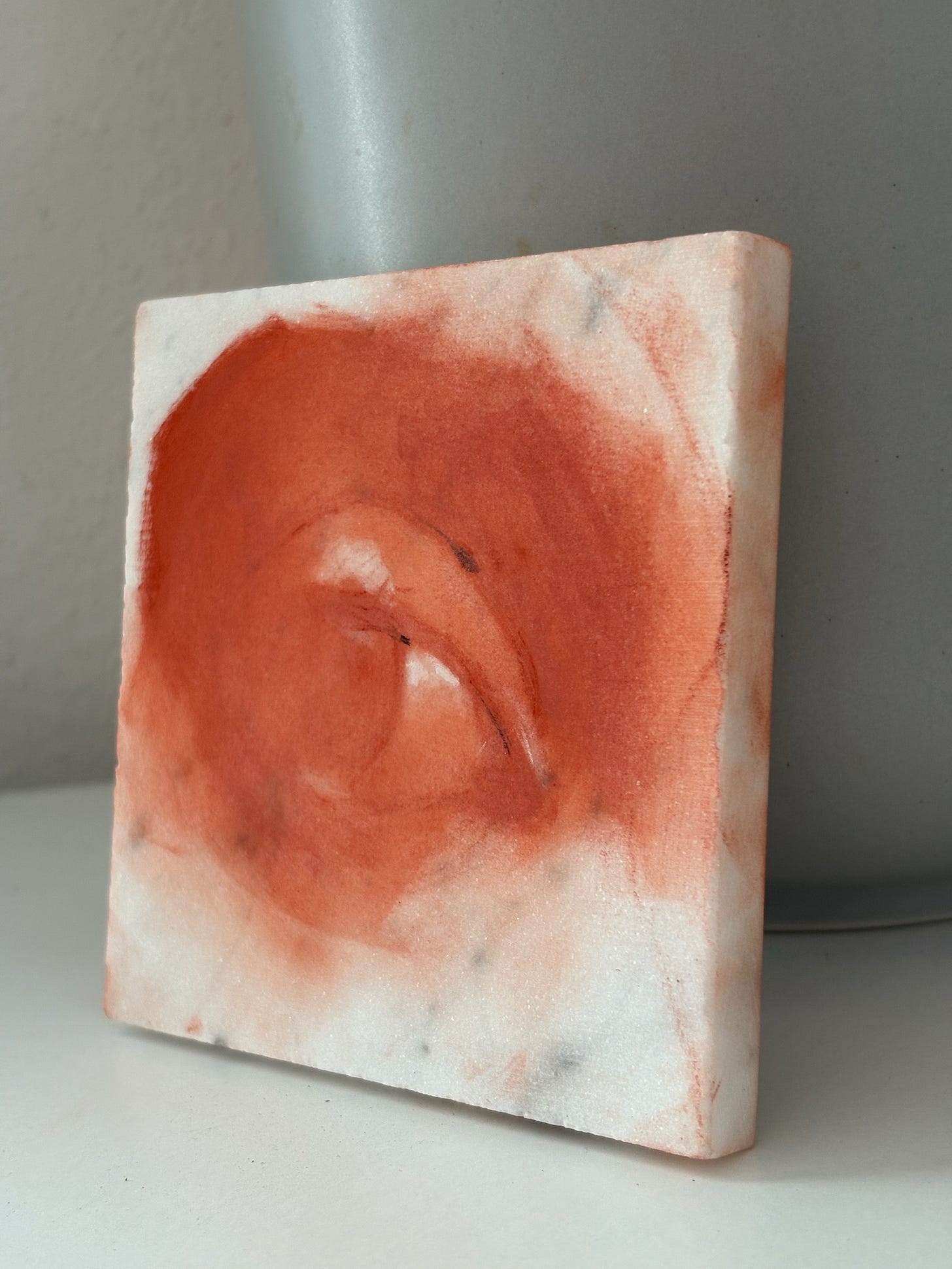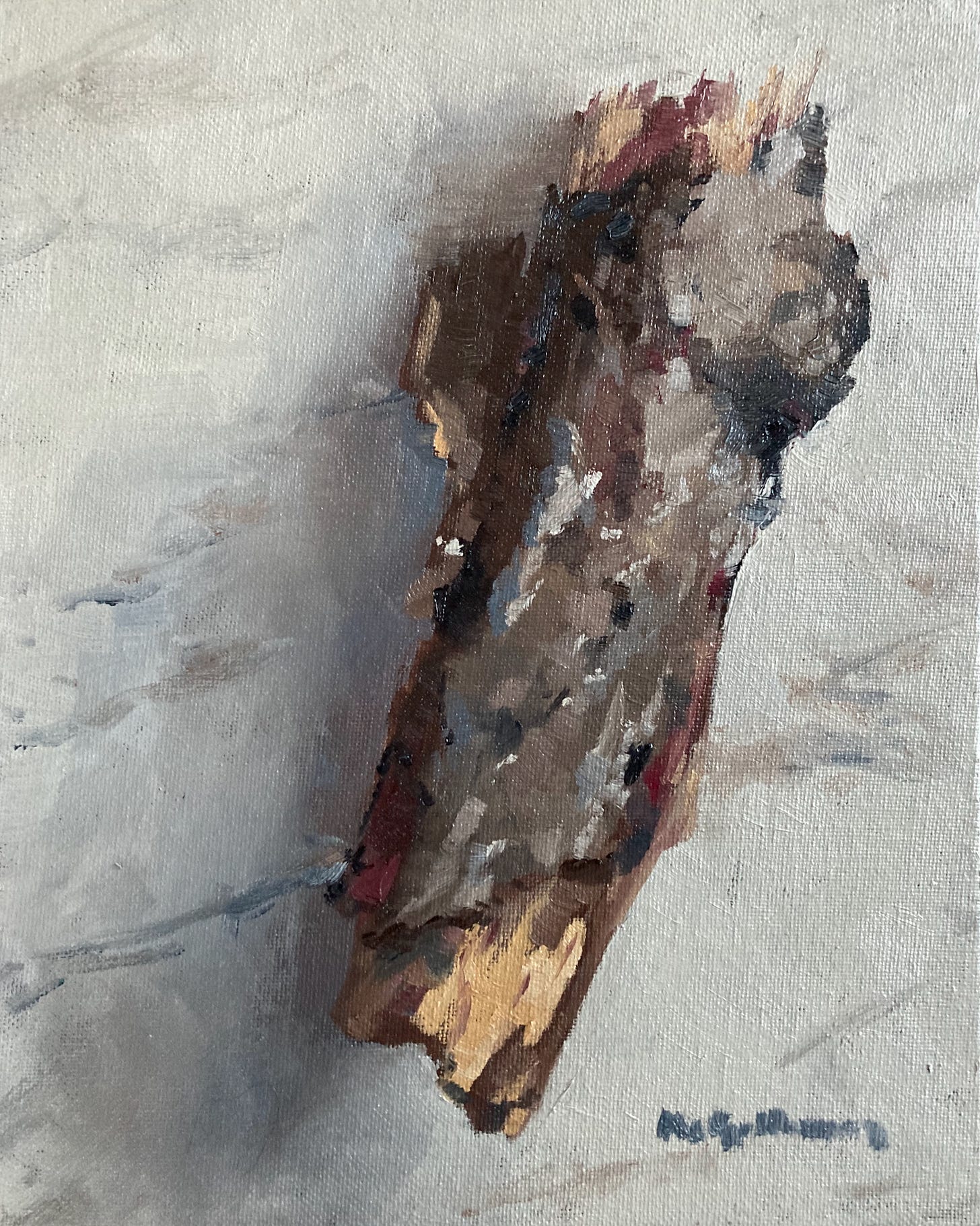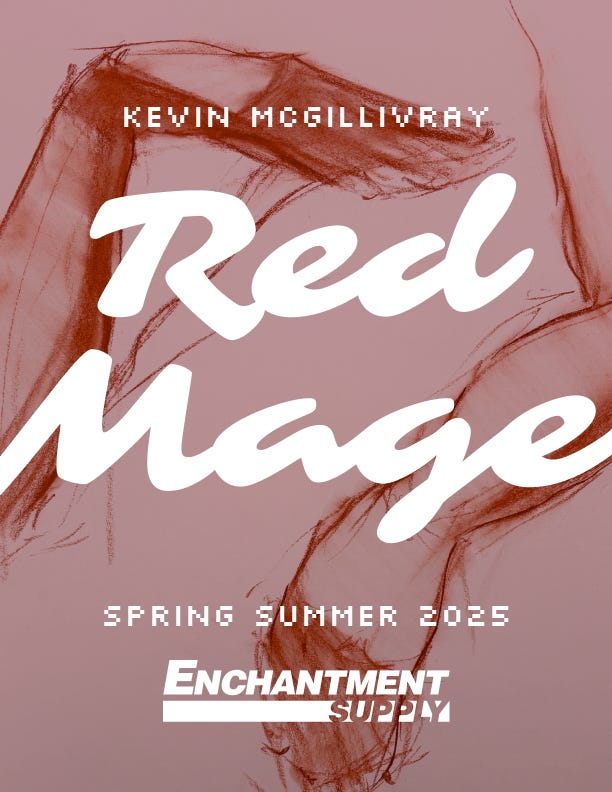Red Mage
Be a healer, carry a sword
Dear reader, welcome back to the Pattern Workshop. If you don’t remember joining us, I’m your host, Kevin McGillivray, and this is a newsletter about practicing creativity, the Quality Without a Name, and general updates on what’s going on in my art studio.
There is too much to share to catch up, so we’re going to skip exposition, and start in medias res, and perhaps fill the blanks later with some well timed flashbacks.
Sanguine has gradually made its way into my studio over a couple years. I started with the very classical trois crayons, sanguine, charcoal, and chalk on a tan toned paper.
Earlier this year I picked up a new set of sanguine sticks and started experimenting with sanguine-only drawings during life drawing sessions. The feeling of drawing with sanguine is so similar to charcoal, and yet it has a distinct warmth and softness that wraps around your fingers when you’re drawing with it. Not only warmth in the actual red tone, but in the soft touch of the medium itself. When the stick warms up from being held and the friction on the page it starts to feel like clay or a pot warming on the stove.
At a life drawing session I made an arm study in sanguine that became the visual direction for a new series titled Red Mage. I loved the brilliancy of the red contrasted with the paper, and the immediacy of the study. I wanted to make more drawings in the same direction, and so the series gradually grew in the studio during what I called “sanguine summer.”
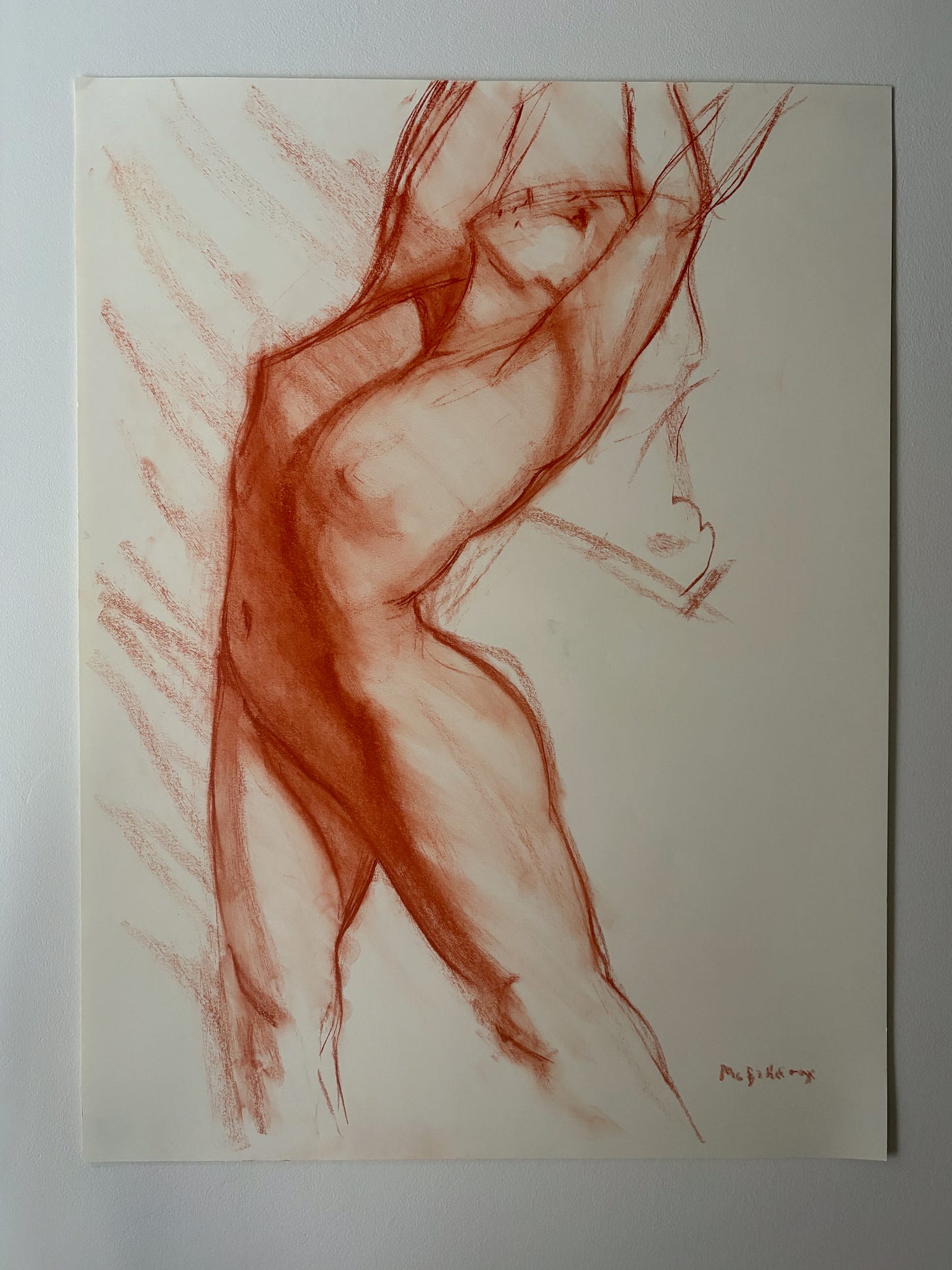
The “red mage” is a gaming reference, but I think it’s a deeper archetype that happens to have found its expressive footing in the medium of video games. In the Final Fantasy series, a red mage is a spellcaster that blends offensive black magic and healing white magic. As a class they are defined by their adaptability and their fluency in opposites, the ability to wield magic at the front line or distribute essential boons to support their companions, and to switch between the two modes in the blink of an eye.
Spellsword-style classes in various role playing games are also examples of the red mage archetype, a character who is equally comfortable with both the mundane sword and the arcane book. In the Legend of Zelda series, Link carries some of these qualities as he gains abilities throughout the game, and sometimes exchanges his classic green tunic for a red one. There’s also a sense of romance, style, and adventure to the red mage, the passionate mystery and bravado of a character like Zorro. They have a sense of hidden knowledge and fleeting identity.
The red mage feels impossible. How can one character blend such extreme opposites on their own and in combination? They synthesize seemingly incompatible opposites into a unified flow, and seem to have no problem shifting between modes. I think this is why the red mage archetype is found in so many subtle variations in games and myths, but is also not the default option of fighter, thief, mage, and healer. Similar to the Green Man living in the boundary between the human realm and the dark woods, the Red Mage is a liminal figure who lives in the threshold between the internal and external worlds, between action and stillness, spell and blade.
I imagine my art studio as a place at the boundary too. And I think for the past few years I’ve been drawing portraits of the guardians of that boundary—the Green Man, the Red Mage, and other anonymous protectors. The Red Mage knows when to be still and heal, and when to take swift action with a sharp sword, which is a hard earned wisdom. I also think the Red Mage represents very clearly what I believe is the underlying practice any creativity, becoming fluent in opposite modes and blending them into a new whole.
The drawings themselves range from full sized figure drawings, as well as studies of arms, hands, eyes, and legs in a variety of sizes. The Scrying Eye drawing on marble was a particularly exciting experiment. Scrying is a type of divination or fortune telling, or alternatively in some stories the ability to see far away places from the safety of the wizard’s tower. Typically it’s practiced with a translucent or reflective material—mirrors, crystals, smoke, water. This is also a kind of watchful protection of the boundary, an awareness of what might be on the other side that is otherwise hidden.
Last year I made a series of still life paintings called Material Components using marble as a background element in the painting, so marble has been a theme as a “surface” for a while now. Marble is inorganic, of course, but it’s admired for the flowing patterns on the surface that feel full of life, and that’s why I liked it as an element of the paintings. It seemed to echo the organic nature of the subjects in the background while being separate from it. It’s a bit ambiguous, unclear whether it is alive or not, or perhaps part of both worlds.
Over the last couple years I’ve experimented with a few other approaches to creating this organic type of pattern on a drawing surface, and in my studio I had a small marble tile that I had collected at one point. Eventually, I made the connection and wondered if it was possible to draw directly on the marble rather than imitating the effect. I’ll write more another time about how I’ve been experimenting with marble drawing, but it turns out that it works quite well, and I’m excited to make a lot more drawings on stone.
I’ve been gradually sharing pieces from Red Mage on my studio Instagram account, @enchantment.supply. I invite you to join me there to follow along, or stay up to date on the Enchantment Supply website.


